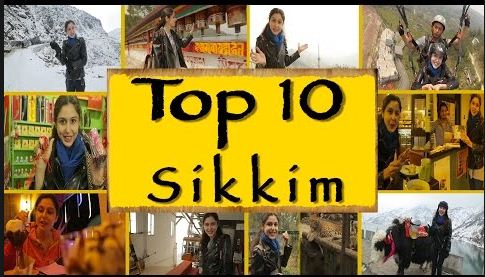Sikkim has been awarded the cleanest state in the list depend on the condition of sanitation in rural areas of 26 states in which Prime Minister Narendra Modi’s home state Gujarat is ranked 14th and Jharkhand comes last.
NSSO Sanitation Survey:
The survey carried out last year by National Sample Survey Office (NSSO) under the words of Union Rural Development Minister Narendra Singh Tomar has listed the top 10 as follows,
1.Sikkim
2.Kerala,
3.Mizoram,
4.Himachal Pradesh,
5.Nagaland,
6.Haryana,
7.Punjab,
8.Uttarakhand,
9.Manipur and
10.Meghalaya
The NSSO conducted the survey in May-June 2015 covering 73,176 households in 3,788 villages across the country. The ranking was given on the basis of the percentage of households having toilets, either household or community toilets.
- Sikkim scored 98.2 per cent on a scale of 100 while Jharkhand, scored 17.7 According to the report, Sikkim has 99.9 per cent sanitation coverage, followed by Himachal Pradesh (97.11 per cent) and Kerala (96.35 per cent). Bihar is at the bottom with 25.16 per cent coverage.
- Odisha (32.79 per cent), Jammu & Kashmir (33.35 per cent), Jharkhand (40.52 per cent), Telangana (42.13 per cent), Uttar Pradesh (44.15 per cent), Andhra Pradesh (47.14 per cent) and Madhya Pradesh (47.48 per cent) are among states that fared poorly.
- The survey was done in two parts. In the first, 26 states were ranked on the basis of 2015 NSSO data; in the second part, 75 districts covering 70,000 households were ranked for cleanliness.
- Sindhudurg in Maharashtra emerged as the cleanest district in the country.
- The survey covered 53 districts located in the plains and 22 in hill states and the North-East.
About Sikkim :
Sikkim is a landlocked state of India, the last to give up its monarchy and fully integrate into India, in 1975. Located in the Himalayan mountains, the state is bordered by Nepal to the west, China’s Tibet Autonomous Region to the north and east, and Bhutan to the east. The Indian state of West Bengal lies to the south.
- With 607,688 inhabitants as ofthe 2011 census, Sikkim is the least populous state in India and the second-smallest state after Goa in total area, covering approximately 7,096 km2 (2,740 sq mi).
- Sikkim is nonetheless geographically diverse due to its location in the Himalayas; the climate ranges fromsubtropical to high alpine, and Kangchenjunga, the world’s third-highest peak, is located on Sikkim’s border with Nepal.
- Sikkim is a popular tourist destination, owing to its culture, scenery andbiodiversity. It also has the only open land border between India and China. Sikkim’s capital and largest city is Gangtok. Almost 25% of the state is covered by the Khangchendzonga National Park.
- According to legend, theBuddhist guru Padmasambhava visited Sikkim in the 8th century CE, introduced Buddhism and foretold the era of the Sikkimese monarchy. Sikkim’s Namgyal dynasty was established in 1642.
- Over the next 150 years, the kingdom witnessed frequent raids and territorial losses to Nepalese invaders.In the 19th century, it allied itself with British India, eventually becoming a British protectorate. In 1975, a referendum abolished the Sikkimese monarchy, and the territory instead became part of India.
- Sikkim has 11official languages: Nepali (which is its lingua franca), Sikkimese, Hindi, Lepcha, Tamang, Limbu, Newari, Rai,Gurung, Magar, Sunwar and English.
- English is taught in schools and used in government documents. The predominant religions areHinduism and Vajrayana Buddhism.
- Sikkim’s economy is largely dependent on agriculture and tourism, and as of 2014the state had the third-smallest GDP among Indian states, although it is also among the fastest-growing state,





